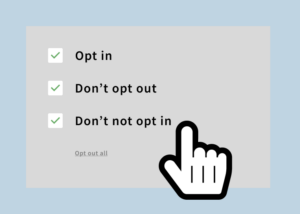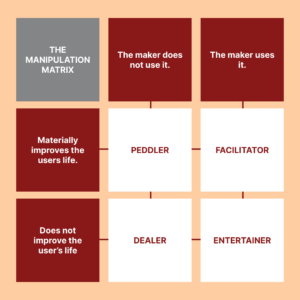In part one and part two of our UX Designer’s Guide to Understanding Cognitive Biases series, we explored how cognitive biases influence user behavior and the importance of recognizing our own biases in design. We also discussed strategies to prevent these biases from compromising our designs. In this final installment, we’ll dive into the more troubling aspects of cognitive biases and the ethical responsibilities they impose on UX designers.
Deceptive Patterns: Understanding Dark Patterns in UX Design
Deceptive patterns, once known as dark patterns, are often mistaken for poor or careless design. There’s a misconception that inexperienced designers might unintentionally create dark patterns. However, this is far from the truth.
Deceptive patterns are intentionally crafted to exploit human psychology, tricking users into actions they didn’t intend to take, such as unwittingly signing up for recurring charges or purchasing unnecessary add-ons. Harry Brignull, who coined the term “dark patterns,” described them as “user interfaces designed to manipulate users into making decisions they wouldn’t otherwise make.” The key takeaway is that deceptive patterns are deliberate, not accidental. Designing them requires a deep understanding of cognitive biases, which are exploited to manipulate user behavior.
The Impact of Cognitive Biases on UX Design
How do cognitive biases factor into deceptive patterns? The same biases that can enhance user experience can also be exploited to create deceptive patterns. For instance, recency bias, which can be used to empower users by presenting the most recent or relevant information, can also be abused to obscure critical details, leading users into making decisions that benefit the designer rather than themselves.

Intent vs. Impact: Navigating Cognitive Biases in UX
 No cognitive bias is inherently harmful; it’s the intent behind its use that determines the outcome. While biases can enhance user experiences, they can be manipulated to create negative ones. Avoiding biases altogether isn’t practical, as it limits our ability to create effective designs. Instead, we must use this knowledge ethically.
No cognitive bias is inherently harmful; it’s the intent behind its use that determines the outcome. While biases can enhance user experiences, they can be manipulated to create negative ones. Avoiding biases altogether isn’t practical, as it limits our ability to create effective designs. Instead, we must use this knowledge ethically.
The best way to avoid the negative side of cognitive biases is to remain an advocate for users. By keeping their best interests at the forefront, we ensure that our design decisions serve them rather than exploit them. Nir Eyal’s Manipulation Matrix found in his book Hooked challenges designers to consider whether they would be comfortable using their own designs. While not a perfect solution, it underscores the necessity of a strong moral compass in design.
How to Uphold Ethical Standards in Your Design Process
To ensure that your design practices are not only effective but also ethically sound, it’s essential to integrate specific checks and balances into your workflow. These practices will help to maintain the integrity of your designs and uphold the trust of your users. Implementing these strategies will not only enhance the user experience but also reinforce your commitment to responsible and user-centered design.
Here are some ways you can ensure your design practices align with ethical standards:
- Self-Assessment: Regularly evaluate your design decisions through the lens of intent. Ask yourself if your choices genuinely benefit the user or if they exploit psychological tendencies for your gain. Reflect on whether you would be comfortable if your design decisions were publicly scrutinized.
- User Advocacy: Prioritize the user’s needs and well-being in all design decisions. Create user personas and scenarios to understand their goals, pain points, and values. Align your design objectives with these insights to ensure that your designs serve the users’ best interests.
- Transparent Practices: Implement clear and honest practices in your design processes. Avoid deceptive patterns that trick users into unintended actions. Ensure that all information is presented transparently and that users can easily access and understand the options available to them.
- Feedback Loops: Establish mechanisms for user feedback and testing. Engage with users to gather their perspectives on your design and identify any areas where biases may have negatively impacted their experience. Use this feedback to refine and improve your design approach.
- Ethical Guidelines: Develop and adhere to a set of ethical guidelines for your design practice. These guidelines should outline how you will address and mitigate cognitive biases and ensure that your design decisions uphold user trust and integrity.
By actively incorporating these practices into your workflow, you’ll be better equipped to harness the power of cognitive biases in a way that benefits users and upholds the highest ethical standards in design.
Building a Better Future Through Ethical Design
UX designers often enter the field with the goal of making a positive impact on people’s lives. Our work has the potential to influence society profoundly, and succumbing to deceptive patterns for short-term gains is unacceptable.
Through this series, we’ve learned how to leverage cognitive biases to improve our designs and mitigate their potential negative impacts. Most importantly, we’ve seen the value of applying this knowledge responsibly. As you move forward in your design practice, remember these three key takeaways:
- Cognitive biases themselves aren’t evil, but understanding and managing them is crucial.
- Ignoring biases doesn’t eliminate their effects; it only makes us more susceptible to their negative consequences.
- The most effective use of biases is to learn about them and apply this knowledge ethically to enhance user experiences.
Ready to put your understanding of cognitive biases into practice? At RIVA, we’re committed to designing user-centric experiences that are both innovative and ethical. Explore how our team can help you achieve your UX goals responsibly. Reach out to start your journey towards better, more ethical design.





